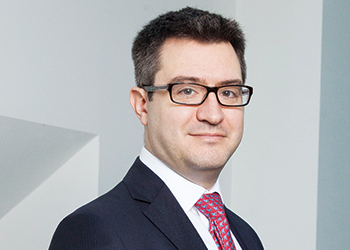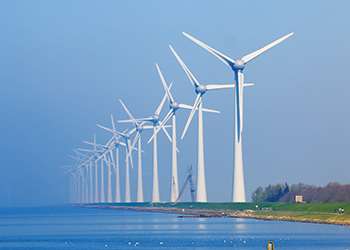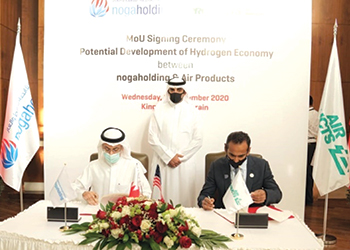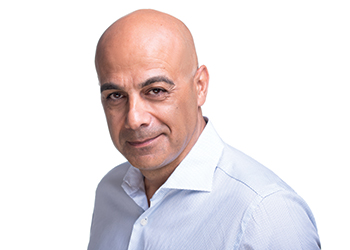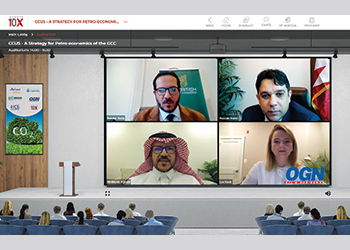
 Speakers and moderators at the OGN webinar
Speakers and moderators at the OGN webinar
Dr Abdulaziz Al-Jodai of Sabic said the reduction of CO2 emissions was an important aim in Sabic's sustainability strategy, and Hussain Makki of Noga made a compelling case to have faith in the actions and thinking of policy makers and practitioners in Bahrain
Countries in the Gulf region are making strong efforts to finding solutions to climate change in line with the Paris Agreement. This was necessary if the world was to meet the under 2 deg C target and achieve net-zero emissions by 2050 as outlined in the agreement.
The world only has 900 gigatons of a rapidly consuming budgeted carbon (GTCO2) remaining and this too will be exhausted by 2040. The issue is further aggravated by the growing energy demand, which is expected to surge 30 per cent by 2030.
Amidst such an environmental predicament, are calls to ban fossil fuel at all helpful? There are more than a billion people in the world without electricity, and while energy renewable sources is one possible solution, it is not enough to meet the demands. The continued use of fossil fuel could, therefore, be an imperative.
The world needs an innovative solution, and Carbon capture, utilisation, and storage (CCUS) offers one of a limited options to help achieve the targets set in the Paris Agreement.
There are at present 33 large scale CCUS facilities in operation and under development around the world. But experts say 2,000 large scale CCUS facilities are needed by 2040 to meet the target. This means building two facilities every week and the need for tens of billions of dollars in investment.
In line with these thoughts, experts from two leading organisations in Saudi Arabia and Bahrain have expressed the urgent need to tackle the issue of carbon emissions, and asserted their countries’ support through various emissions reducing methodologies, writes Abdulaziz Khattak for OGN.
Dr Abdulaziz Al-Jodai, Sabic Technology and Innovation Research Fellow, and Hussain Makki, adviser at Bahrain’s National Oil and Gas Authority (Noga) articulated their thoughts at a recent webinar organised by OGN magazine, published by Bahrain’s Al Hilal Group.
The interactive event entitled, "CCUS – a Strategy for Petro-economies of the GCC" was moderated by Bandar Ali Murad Reda, Secretary General and CEO of the Arab British Chamber of Commerce, and Larissa Lee Beck, CCUS Policy Innovation Director of the Clean Air Task Force from the US.
SABIC LEADS IN SUSTAINABILITY
Sabic, a global leader in diversified chemicals, remains committed to investing considerably in innovative sustainability projects globally and increasing the electrification and transition to renewable energy to reduce CO2 emissions. In working toward this goal, Sabic aims to help build a sustainable future for the company and its customers, and ensure there is no adverse impact on local communities.
Throughout its operations, Sabic is working to shift its product portfolio to reduce emissions and support global guidelines and standards across the value chain in areas such as light weighting in mass transportation, down gauging in packaging, and smart fertilizers.
Outlining Sabic’s journey toward a circular future, Al-Jodai said: "Carbon capture, utilisation, and storage (CCUS) are essential enabler technologies to the circular carbon economy that offer an integrated way of addressing climate change mitigation goals."
Al-Jodai, who distinguished himself as Sabic’s representative in an official Saudi delegation to G20 meetings on energy transformation and climate sustainability in Japan last year, highlighted Sabic’s CO2 pioneering project at its manufacturing affiliate, United.
"The world’s largest CO2 purification plant has the capacity to capture up to 500,000 metric tons a year of CO2 emissions. Over 11 million trees would need to be planted to capture this equivalent amount," he said at the webinar.
The reduction of CO2 emissions is an important aim in Sabic's sustainability strategy, and the United plant is the first carbon capture and utilisation project to be realised in Saudi Arabia.
Sabic’s commitment to provide sustainable products is built around the three ‘Rs’ – ‘reduce, reuse and recycle’. Its circular economy solutions, such as its Trucircle initiative, is the company’s new portfolio and services for circular solutions that demonstrates how Sabic can successfully combine sustainability and innovation to respond to the dynamic needs of its customers as well as society.
Al-Jodai cited technical grade urea as an example of commercial applications of recycled CO2. The product enables cleaner diesel technology in engines and allows the engine to perform better and to use fuel more efficiently while destroying the increased nitrogen oxides with burning fuel.
Sabic made a significant step toward sustainable hydrogen usage and circular carbon economy when Saudi Arabia recently shipped its maiden blue ammonia cargo to Japan for use in zero-carbon power generation, paving the way forward for the further use of hydrogen in the energy system. The ammonia was produced at Sabic’s SAFCO facility in Jubail as part of supply chain demonstration.
Al-Jodai further highlighted Sabic innovative materials in healthcare industries: a range of materials that can withstand even the most severe sterilisation methods; fluid and blood handling applications that demand a high level of clarity to enable visibility to the flow of the fluids; CT and MRI scanners that require plastics with high strength and which can replace metal and glass for weight out; and plastic materials like Ultem resin, Lexan resin, and Sabic PP resin.
Further, Sabic’s innovative materials in light-weighting technology for the automotive industry help drive lower emissions. They are 40 per cent lighter and more impact resistant than a comparable glass window.
NOGA TAKES MEASURES
Noga has taken the lead in acknowledging the climate change issues facing the world. In his talk, Maki outlined the authority’s approach to meet the science provided that goes directly in the face of many climate change deniers. He made a compelling case to have faith in the actions and thinking of policy makers and practitioners in Bahrain.
Makki pointed out that since 1979 Noga has used gas, LNG to power large sections of Bahrain’s industries. The move towards gas power has utilised some 3,500 billion cft of gas. This has seen a reduction of the carbon foot print in this area alone of 0.2 gigatons of C02.
Bahrain has been dynamic to ensure reducing the damage to its immediate environment caused by gas flaring. The Kingdom signed up to the protocol to ‘Zero Routine Flaring by 2030’ in 2016. This goal was achieved within 18 months of signing the protocol.
The Kingdom has also been proactive in capturing carbon emissions. GPIC has captured 40 per cent of its emissions. Asry, the leading ship repair yard in the northern Gulf, installed devices to limit sulphur gases from marine fuel within 33 days across all its vessels and outlets in the shipyard. The Bapco Modernisation Programme (BMP) is a major catalyst for change in carbon capture and utilisation for Bahrain.
According to Makki: "The BMP has helped with an improvement of 28 per cent for Bahrain on the Energy Efficiency Index. Bahrain’s oil and gas sector’s actions have raised the country to one of the leading countries in the world to deal with Crude Carbon Intensity."
In his talk, which focused on the policies surrounding CCUS, Makki said carbon emission reduction efforts in the region were taken seriously with decisions to act being been made at the ministerial level.
"Countries in the region have made CCUS as part of their commitment to combatting climate change. Some GCC countries are even planning a joint CCUS project," he said.
In fact, of the 13 countries that mention CCUS as part of their mitigation solutions, 5 are from this region, including Bahrain, Saudi Arabia and the UAE.
Noga, he said, was proud to be part of the global climate change movement, adding the authority shared the interest of the international community to find solutions. The organisation has adopted the Carbon circular Economy (CCE) as the approach to deal with issues arising from fossil fuels and their effect on the environment. The CCE model looks to reducing energy consumption, providing clean and affordable energy, capturing remaining carbon emissions, saving carbon safety, use carbon in products and to neutralise the remaining carbon.
He outlined a few of the many emission mitigation approaches present worldwide today. These included Corsia (Carbon Offsetting and reduction scheme for international aviation); CLCFS (California low carbon fuel standards); EU’s Renewable Energy Directive; FQD (Fuel Quality Directive); and 45Q. Makki’s personal favourite was the 45Q, which he proposed should be implemented at the international level.
He stressed adding a value to the CO2 in order to achieve objectives such as avoiding emitting CO2 into the atmosphere; utilisation of the CO2; and encouraging people to have CO2 storage.
Due to the limitation of the use of CO2 in the region, its price was high compared to elsewhere in the world. To address this, Makki suggested integrated carbon and hydrogen hubs and clusters.
He also called for the need to have emission trading schemes (ETS) regionally and internationally, similar to what we for the clean development mechanism (CDM) but in a different way
Lastly, he encouraged collaboration with dedicated funds, such as the Green Climate Fund (GCF), which supports the efforts of developing countries in responding to challenge of climate change.










































































